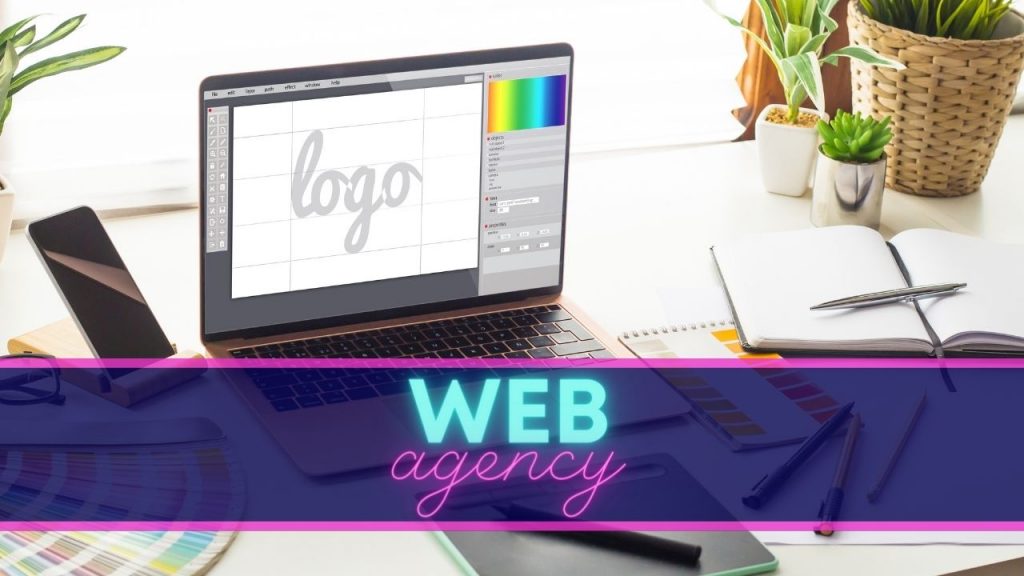In the world of marketing and communications, a strong, consistent brand image is essential to stand out from the competition and establish a memorable presence in the marketplace. That’s why creating a logo is a crucial element for any company or organization. However, a logo alone is not enough. Create a graphic charter for your logo to ensure the consistency and continuity of your brand image. We’ll take you through the steps involved in creating an effective one in this article. It will enhance your logo and help you establish a strong, consistent brand image.
Understanding what a graphic charter is
A graphic charter defines the graphic elements that make up a company’s or organization’s brand image.
It ensures the consistency and continuity of the company’s visual identity across different communication media.
The graphic charter defines the rules for using graphic elements such as typography, colors and symbols. It also defines spacing and dimensional rules for the logo and other visual elements.
The graphic charter defines the rules for the use of graphic elements such as typography, colors and symbols.
The graphic charter can also include examples of applications for different media, such as print and digital. It is an essential tool for creating a strong, coherent brand image that is easily identifiable by consumers.
The graphic charter can also include examples of applications for different media, such as print and digital.
Analyzing your business and your market
The first step in creating an effective graphic charter for your logo is to analyze your company and your market. This analysis will help you understand the needs and expectations of your target audience, as well as market trends and expectations.
Here are some key elements to consider when analyzing your business and market:
Identifying your target audience
Who are your customers? What are their demographics, interests, needs and expectations? What are the communication channels they use most frequently?
Analyze your competition
Who are your main competitors? What is their brand image and communication strategy? What are their advantages and weaknesses? How can you differentiate yourself from your competitors?
Defining your positioning
What are the key values and messages you want to communicate to your target audience? What advantages and benefits do you offer your customers? How is your company positioned in relation to the competition?
To define the key elements of your graphic charter, such as typography, colors and symbols, analysis of your company and your market is essential. These elements must reflect your company’s identity and values. Analyze your company and your market to create a coherent and effective graphic charter that meets public expectations.
Choose the graphic elements of your charter
Choose graphic elements that reflect your identity and meet the expectations of your target audience. Here are the key elements to consider when choosing the graphic elements of your charter:
Typography
Typography is one of the most important elements of your graphic charter. It must be easy to read and understand, while reflecting your company’s identity and values. You can choose modern, classic, sans-serif or serif typography, depending on the image you want to communicate.
Colors
Colors are an important element of your graphic charter. They can have an emotional impact on your target audience. You can choose colors that reflect your company’s values. You can also opt for those that evoke specific emotions depending on your target audience. You can also choose a color palette for different uses. For example, one color palette for print media and another for digital media.
Symbols and icons
Symbols and icons are graphic elements that can reinforce your company’s visual identity. You can choose symbols that reflect your company’s values or products. The same applies to icons, which represent the different functions of your company.
Define your graphic identity for different media
.
The third step in creating an effective graphic charter for your logo is to decline your graphic charter for different media. This means adapting your graphic charter for different communication media such as print and digital.
For print media, you can adapt your graphic charter for business cards, brochures, flyers, signs, packaging and advertising materials. For digital media, you can apply it to websites, mobile applications, advertising banners, newsletters and social networks.
For print media, you can apply your graphic design to business cards, brochures, flyers, signage, packaging and advertising materials.
It’s important to take into account the specificities of each medium to adapt your graphic charter accordingly. For example, colors may appear differently on a screen than in print, or the dimensions of your logo may vary depending on the medium. It’s therefore important to create clear rules for the use of your graphic charter on each medium.
Defining the rules for using your graphic charter
The fourth and final step in creating an effective graphic charter for your logo is to define the rules for using your graphic charter. The rules of use are a set of guidelines that describe how to use your visual identity consistently across all communication media.
Usage rules can include guidelines on how to use your logo, typography, colors, symbols and icons. For example, you can define rules about the minimum size of your logo, the colors allowed for your logo, or different versions of your logo for different uses.
It’s important to create clear, concise rules to ensure that your visual identity is used consistently and effectively across all communication media. Usage rules can also help avoid common mistakes such as incorrect color usage or logo stretching.
It’s important to create clear, concise rules to ensure that your visual identity is used consistently and effectively across all communication media.
Create concrete examples of how to use the graphic guidelines
.
In addition to defining its rules of use, it’s useful to create concrete examples of how your visual identity will be used on different communication media. Concrete examples can help visualize how your visual identity will be used in practice, and assess whether it is effective.
Concrete examples can include mock-ups of business cards, brochures, websites, social networks and advertisements, where your visual identity is applied consistently and effectively. This will show how your graphic identity can be applied to a variety of media, and illustrate how your logo, typography, colors and symbols work together.
At the same time, you’ll be able to see how your visual identity can be applied to a variety of media.
Concrete examples can also help identify any gaps or inconsistencies in your graphic charter and correct them before applying them to all communication media. Finally, concrete examples can be used to communicate to your employees, partners and suppliers the rules for using your graphic charter.
In summary, creating concrete examples of how your graphic charter is used is an effective way of evaluating and testing your visual identity on different communication media. This will help ensure the consistency and continuity of your brand image and reinforce your company’s reputation.
Implementing the graphic charter and enforcing it
The final step in creating an effective graphic charter is to implement it and enforce its rules. This involves distributing the graphic charter to all members of the company, partners and suppliers, ensuring that the rules are understood and followed, and setting up validation processes for the use of the visual identity.
Implementing the graphic charter can include creating document and presentation templates so that employees can easily apply the rules for using the visual identity. It may also be useful to set up training courses to raise awareness among company members of the issues involved in branding and the importance of consistency in visual communication.
Implementing validation processes for the use of visual identity can help guarantee compliance with the charter.
These processes can include internal validations prior to the publication of any new communication media. As well as external validations for partners and suppliers.
In short, setting up and respecting the rules of the graphic charter is essential. This guarantees the consistency and continuity of your company’s brand image.
The graphic charter needs to be distributed to all members of the company and template documents created. Training and validation processes must also be put in place to ensure that the graphic charter is followed on all communication media.
It’s important to ensure that the graphic charter is followed on all communication media.









